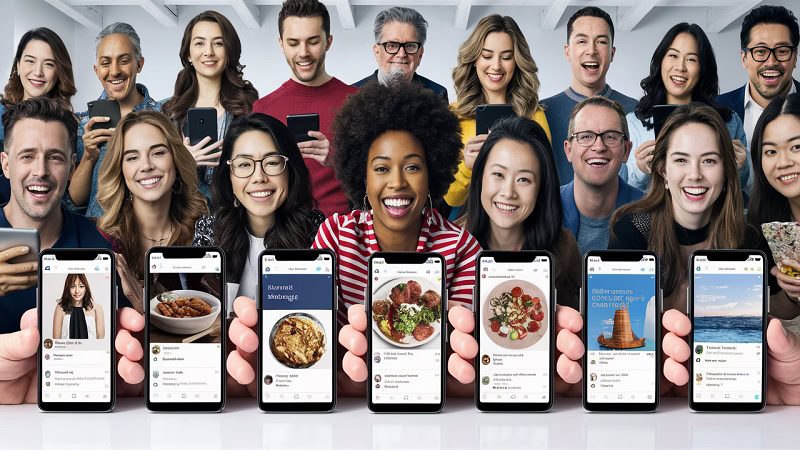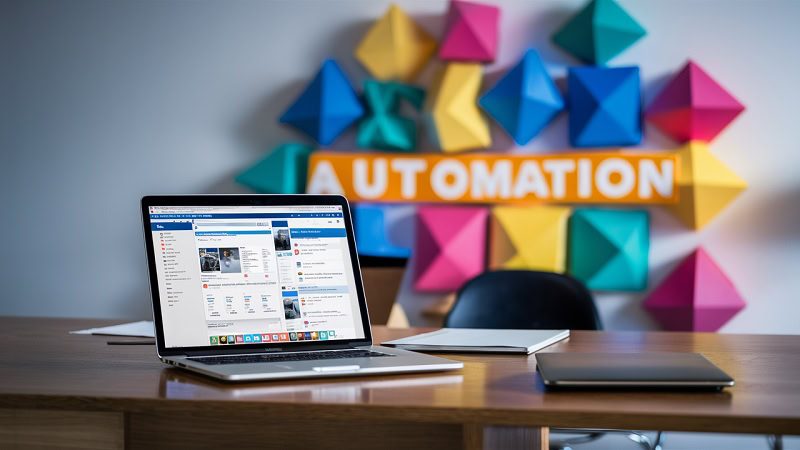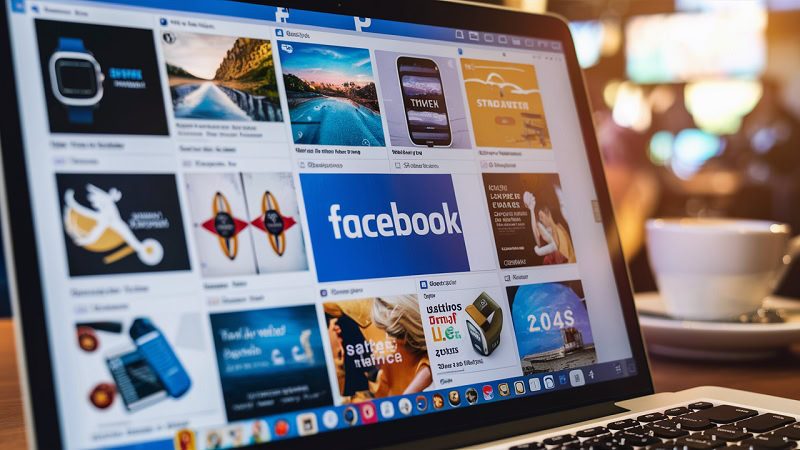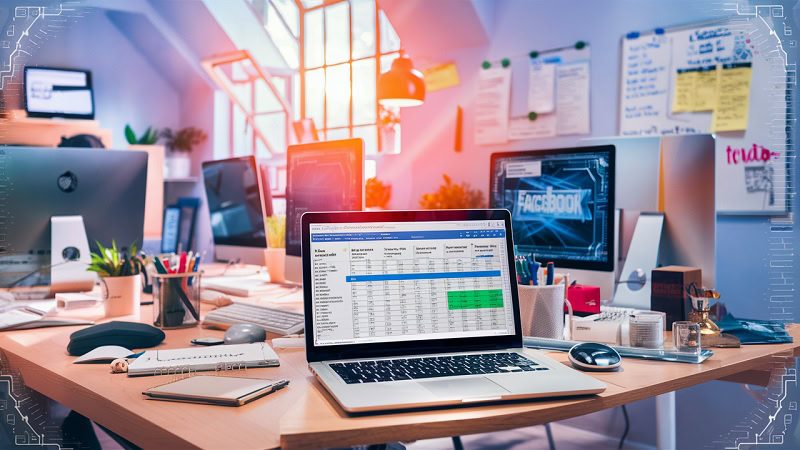Are you wondering how big your Facebook ad audience should be? You’re not alone. It’s a common question for anyone running Facebook ads.
Get it right and your ads will reach the perfect people. Get it wrong and you could waste a lot of money showing your ads to folks who aren’t interested.
The truth is, there’s no one-size-fits-all answer. The best audience size for your Facebook ads depends on a variety of factors.
But don’t worry, we’re here to help. In this article, we’ll break down everything you need to know to choose the right audience size for your Facebook ad campaigns.

Boost E-Commerce ROI: Download Our Free CPA & ROAS Calculator

Why Audience Size Matters
Before we go deeper into the specifics, let’s talk about why audience size is so important. It all comes down to two key things: relevance and cost.
Facebook’s ad system is designed to show your ads to people who are most likely to be interested in them. The more relevant your ad is to your audience, the better it will perform.
And that’s where audience size comes in. If your audience is too broad, your ad may not be relevant enough to get good results. But if it’s too narrow, you may not reach enough people to make an impact.
There’s also the question of cost. In general, the broader your audience, the more you’ll pay for each ad click or view. So you need to find a balance between reaching enough people and keeping your costs under control.
Factors That Affect Audience Size
So what determines the right audience size for your Facebook ads? Here are a few key factors to consider.
1. Your Ad Objective
The first thing to think about is your ad objective. What do you want people to do when they see your ad?
Are you looking to generate brand awareness? Drive traffic to your website? Get people to download an app? Your objective will influence the type of audience you should target.
For example, if you’re running an awareness campaign, you may want a broader audience to reach as many people as possible. But if you’re looking for conversions, a more targeted audience may be better.
2. Your Budget
Your ad budget also plays a role in determining your audience size. The more money you have to spend, the larger your audience can be.
But be careful not to spread your budget too thin. It’s better to have a slightly smaller audience that you can reach effectively than a huge audience that barely sees your ads.
As a general rule, start with a smaller audience and expand it over time as you see results. That way you can control your spending and make sure your ads are performing well before scaling up.
3. Your Target Demographics
Who are you trying to reach with your ads? Your target demographics will have a big impact on your audience size.
Some demographics are naturally larger than others. For example, there are a lot more 25-34 year olds on Facebook than 65+ year olds. So if you’re targeting a younger age group, you’ll likely have a larger potential audience.
The same goes for location. If you’re targeting a specific city or region, your audience will be smaller than if you’re targeting a whole country.
Think carefully about who your ideal customer is and what characteristics they have. The more specific you can be, the easier it will be to zero in on the right audience size.
4. Your Industry and Niche
The industry and niche you’re in can also affect your audience size. Some industries have naturally larger audiences on Facebook than others.
For example, the fitness and health industry tends to have a large and engaged presence on Facebook. So if you’re selling fitness products, you may be able to reach a larger audience than if you’re selling, say, industrial equipment.
Of course, this isn’t a hard and fast rule. There are always exceptions and outliers. But in general, popular consumer-facing industries will have larger potential audiences than niche B2B industries.
So take a look at how other businesses in your industry are approaching Facebook ads. What size audiences are they targeting? What seems to be working well for them?
5. Your Funnel Stage
Where are people in your sales funnel when they see your ad? Are they completely new to your brand? Or are they already familiar with you and considering a purchase?
Your funnel stage will influence the type of audience you should target and how large it should be.
For example, if you’re targeting people at the top of the funnel who don’t know your brand yet, you’ll likely want a larger audience. Your goal is to capture their attention and get them interested in what you have to offer.
But if you’re targeting people further down the funnel who have already interacted with your brand, a smaller, more focused audience may be better. You know these people are interested, so you can be more targeted in your approach.
The key is to align your audience size with your funnel stage and ad objectives. Make sure you’re reaching people with the right message at the right time.
6. The Type of Ad You’re Running
The type of ad you’re running can also influence your ideal audience size. Different ad formats work better with different audience sizes.
For example, if you’re running a video ad, you may be able to reach a larger audience than with a static image ad. That’s because video tends to get more engagement and is more likely to stop people from scrolling past.
On the other hand, if you’re running a highly targeted lead generation ad, a smaller audience may be more effective. You don’t need to reach a huge group of people, just the right ones who are most likely to convert.
Think about the strengths and limitations of each ad format and how they align with your goals. Then choose an audience size that plays to those strengths.
So, What’s the Magic Number?
By now you’re probably thinking, “Okay, but what’s the actual number? How big should my Facebook ad audience be?”
The truth is, it varies. As we’ve seen, there are a lot of factors that go into determining the right audience size.
But here are some general guidelines to keep in mind:
• For brand awareness campaigns, aim for an audience of at least 500,000 to 1 million people.
• For consideration campaigns (like traffic or engagement), 100,000 to 500,000 is often a good range.
• For conversion campaigns (like sales or lead generation), 10,000 to 50,000 is usually a good starting point.
These are very broad ranges and your ideal audience size may fall outside of them depending on your specific situation. But they can give you a ballpark idea of where to start.
It’s also worth noting that Facebook will give you a “potential reach” estimate when you set up your audience targeting. This can be a helpful guide, but take it with a grain of salt. It’s an estimate, not a guarantee.
Tips for Finding Your Sweet Spot
So how do you zero in on the perfect Facebook ad audience size? Here are a few tips to keep in mind:
• Start small and scale up. It’s much easier to start with a smaller audience and expand it than to try to narrow down a huge audience.
• Use Facebook’s audience insights tool. This can help you understand the demographics, interests, and behaviors of your potential audience.
• Split test different audience sizes. Run the same ad to two different sized audiences and see which performs better.
• Monitor your results closely. Keep an eye on your ad metrics and make adjustments as needed. If your audience is too small, you may not get enough reach. If it’s too big, your relevance and clickthrough rates may suffer.
• Don’t be afraid to experiment. The only way to find your sweet spot is to test different things and see what works for your unique business and goals.
The Bottom Line
Choosing the right Facebook ad audience size can be tricky. There’s no one perfect answer that works for every business in every situation.
But by understanding the factors that influence audience size and using the tips and guidelines in this article, you can find the sweet spot for your ads.
It all boils down to balancing relevance and cost. You want an audience that’s large enough to make an impact but targeted enough to get results.
So start small, test often, and don’t be afraid to make adjustments along the way. With a little trial and error, you’ll be able to dial in the perfect Facebook ad audience size for your business.






